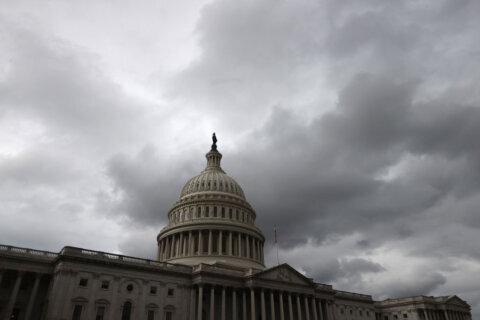We are three months from the start of hurricane season — though the official start date may come earlier this year because hurricanes have occurred outside the traditional season in recent years.
And, yes, those famous Disney characters from “Frozen” could really serve as inspiration for hurricane names this year.
Three of them — Ana, Elsa, Olaf — are on the list of official names in the Atlantic and east Pacific basins, in what could be another active hurricane season.
Though it’s too early to know definitively, forecasters say a few key elements could determine whether we see another active season similar to last year.
“If El Nino does not occur, it would tend to load the dice towards a more active Atlantic hurricane season,” said Phil Klotzbach, a research scientist at Colorado State University. “But sea surface temperatures in the Atlantic Main Development Region are also critical. If those sea surface temperatures are much warmer than normal, it could potentially drive a very active Atlantic hurricane season.”
While it may seem far away, now is the best time to prepare before the storms form, particularly since the number of storms seems to be heading in the wrong direction.
The number of storms are increasing
The official Atlantic hurricane season runs from June 1 through November 30, while the eastern Pacific hurricane season runs from May 15 through November 30.
However, Mother Nature doesn’t always follow the calendar. In the last six years there has been a named tropical storm in the Atlantic before the June 1 start date.
“In order to provide more consistent information on the potential for late May and early June systems, (the) National Hurricane Center (NHC) will now begin the routine issuance of the Atlantic Tropical Weather Outlooks (TWOs) on May 15, which is when routine TWOs also begin for the eastern Pacific basin,” said Dennis Feltgen, a public affairs officer at the National Oceanic and Atmospheric Administration, or NOAA.
However, the official hurricane season start dates may be permanently changing. The World Meteorological Organization (WMO) will hold its 43rd Hurricane Committee meeting this spring. The WMO will propose changing the calendar so the dates of both the Atlantic and eastern Pacific hurricane seasons line up.
But it’s not just in May where we are seeing an increase in storm activity. The entire season is witnessing more storms.
“The latest set of 30-year averages of Atlantic Basin tropical cyclone counts are all noticeably higher than the previous set,” said Brian McNoldy, a senior research associate at the University of Miami’s Rosenstiel School of Marine & Atmospheric Science. “The number of named storms increased by 19%, the number of hurricanes increased by 13%, and the number of major hurricanes (Category 3+) increased by 19%.”
The time period of 30 years is chosen so that forecasters can monitor changes in the season over time. Until last year, meteorologists used the time span between 1981 and 2010. This year they will begin monitoring changes between 1991 and 2020. NOAA updates these periods every decade to keep pace with the changing climate.
“Additionally, the average Accumulated Cyclone Energy, or ACE, increased by 16%,” McNoldy said. “ACE is a commonly-used metric which is independent of the number of storms, but rather accounts for the combined effects of the intensity and longevity of storms. In short, it raises the bar for what’s considered average.”
So why are we seeing more frequent and intense storms?
“We do know that ocean temperatures are warming, which creates a larger and richer habitable zone for tropical cyclones,” McNoldy said. “All other things being equal, that alone would gradually increase the storm counts. Unfortunately, all other things aren’t equal … improving technology also gradually allows hurricane experts to identify important but subtle fluctuations in a storm’s intensity.”
Could we see another record season?
The 2020 Atlantic hurricane season was a record-breaking one. There were 30 named storms, the most ever in a single year. And 12 of them made landfall in the US, also a record. For the second time in recorded history, the National Hurricane Center , prompting the use of the Greek alphabet to name storms for the remainder of the season.
Having 30 named storms in back-to-back years would be unprecedented. In fact, the National Hurricane Center has only used every name on the pre-determined list of names for tropical systems twice in recorded history — in 2005 and 2020.
Colorado State University will release its first seasonal hurricane forecast on April 8, and NOAA will release its forecast in mid-May.
There are certain factors to look for that give researchers and forecasters an idea of how the season might fare.
El Niño is one of the bigger factors because of its influence on tropical system development. NOAA predicts there is a 10% chance of El Niño occurring, which is not necessarily a good thing.
“If El Niño does not occur, it would tend to load the dice towards a more active Atlantic hurricane season,” Klotzbach said. “But … a lot can change.”
“Sea surface temperatures in the Atlantic Main Development Region are also critical,” Klotzbach said. “If those sea surface temperatures are much warmer than normal, it could potentially drive a very active Atlantic hurricane season.”
Klotzbach says that the Atlantic looks pretty favorable in terms of warm sea surface temperatures this early in the year.
You’ve heard it before — it only takes one hurricane to make it an active season for you personally. However, the more landfall systems there are in a single season, the more likely any one person will be affected. Last year was a perfect example of that since more than half of the 50 states were affected by at least one of the 12 landfall storms.
However, the total number of storms in a season does not always tell the whole story.
Klotzbach points out that 1981 was a moderately active season — 12 total storms — but only two of the weaker systems affected the US. By contrast, 1983 was one of the most inactive storm seasons on record, but Hurricane Alicia caused more than $1 billion of damage in Houston, Texas.
That means it’s still a good idea to refresh your preparedness kit and rehearse your evacuation plan before the start of the hurricane season.
If an active hurricane season materializes, it’s possible that the “Frozen” trifecta could make landfall in the US. It’s possible for Olaf — which is on the eastern Pacific hurricane list — to make landfall in a southwestern US state, and Ana and Elsa to make landfall along the Atlantic or Gulf of Mexico.
Given their alphabetical order, however, it is highly unlikely that all three names will exist as hurricanes at the same time.







